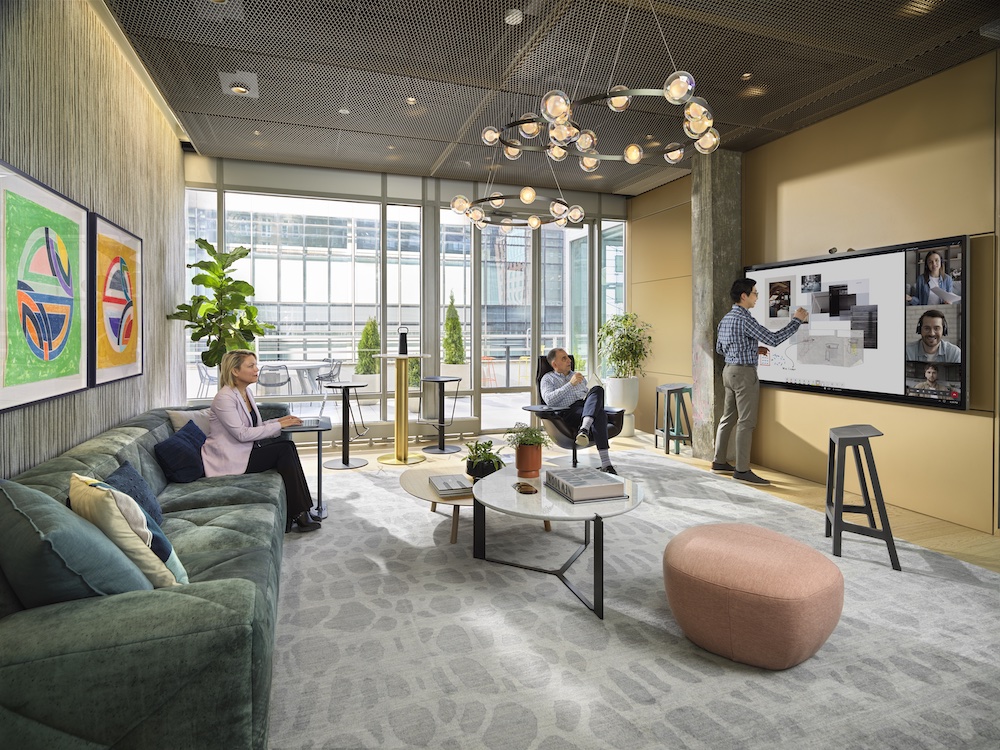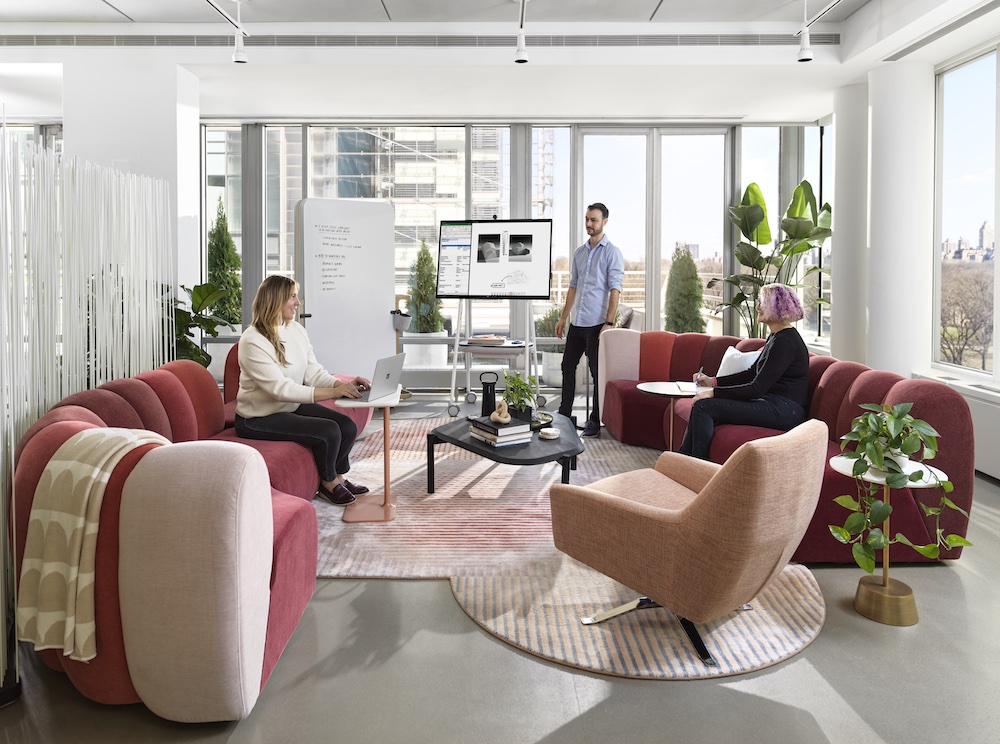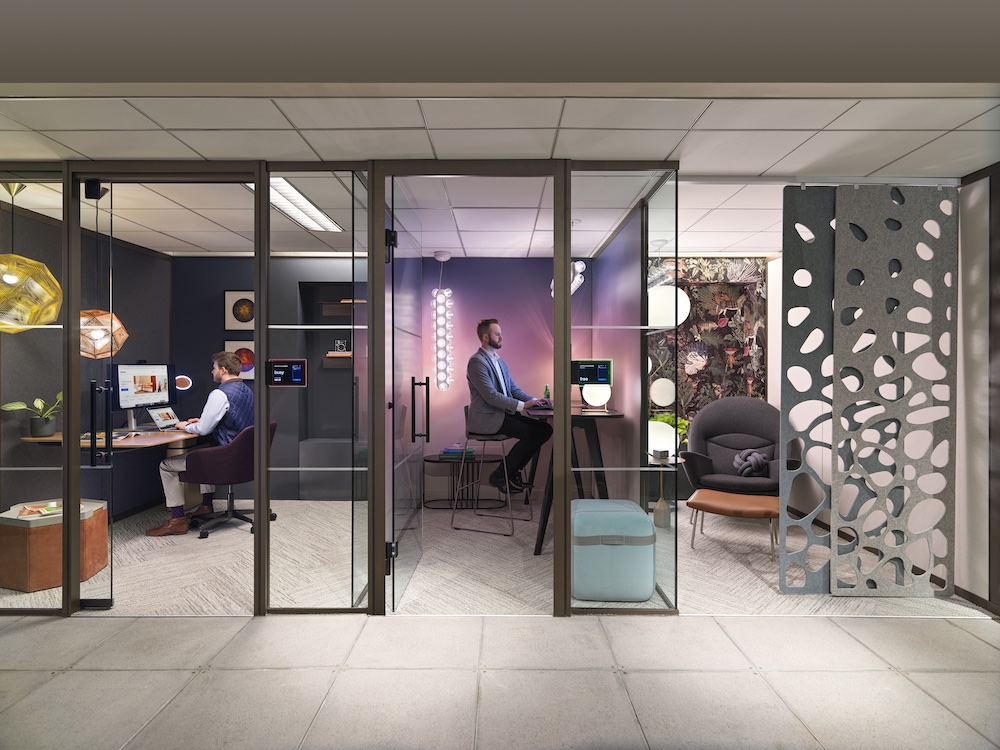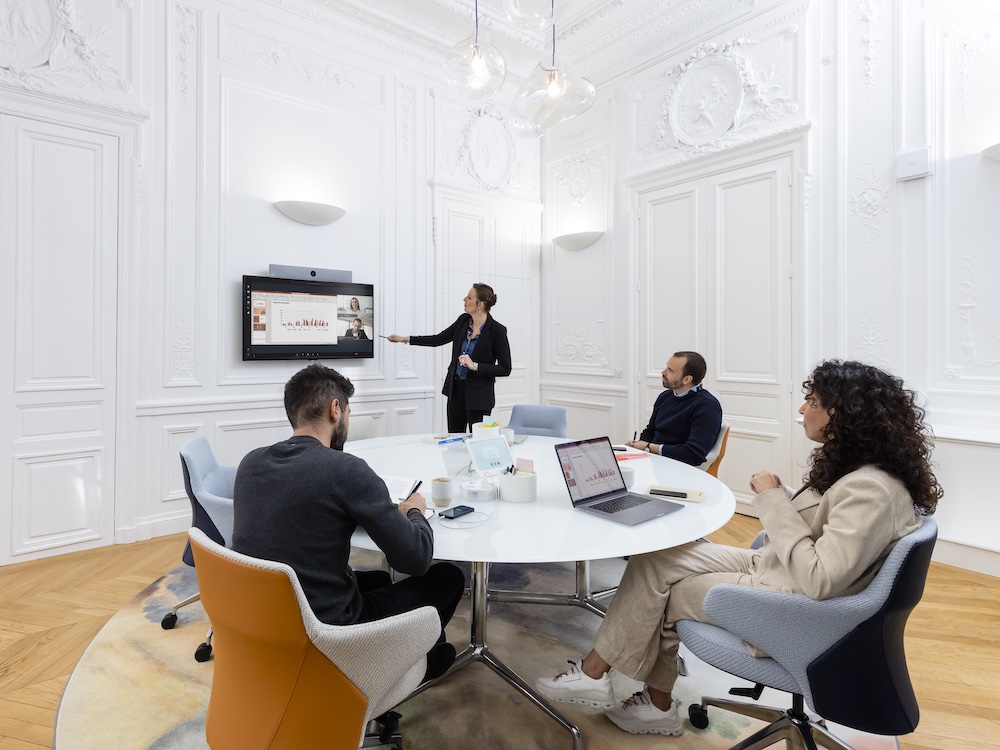Tracy Brower of Steelcase explores how to successfully bring people back to the office through intentionality.

The debate is raging, and the struggle is real: Organizations want people back in the office and many workers are resisting. Despite companies asking employees to return, plenty of leaders are reporting offices are still barren of people and lacking the energy that comes when people are together.
While it’s true some people never left the workplace (think: facility managers, lab scientists, distribution employees, retail clerks, healthcare workers), many have not yet gone back. Summer schedules and new Covid variants could be to blame, but with less sickness and the return of fall schedules, the time for remote work may be waning.
Even with a return to the office though, hybrid work is probably here to stay. Companies are recognizing the value of providing more choice for where and when people work, and employees are increasing their expectations for control over their work—and this trend is likely to continue despite contraction in the economy. People will likely return to the office for part of the week, but for many, the five-day per week commute is a thing of the past.
The office still has a critical role to play—in connecting people, giving them a shared sense of purpose and a venue for doing great work alongside others.
The office still has a critical role to play—in connecting people, giving them a shared sense of purpose and a venue for doing great work alongside others. These can occur virtually as well, but being face to face has proven value for effectiveness (especially when the work is complex or collaborative), for building social capital and for innovation.
So how can organizations get people back? How do they compel people, rather than cajole them? How do they make the workplace a magnet, rather than a mandate? And how do they influence people, so they really want to show up and bring their best?
Clarity and Control
One of the most important ways to get people back is to set clear expectations. Many organizations have been cautious about insisting on a return because they’re afraid to lose people. But the result has been a paltry response. In fact, people appreciate clear direction and strong messaging. Just as humans prefer to work with others who have strong character, they tend to prefer cultures where they know what to count on and what’s expected.

Companies are wise to set clear guardrails about how much they expect people to be in the office. When there is no default, people have to put more effort into deciding when to come into the office—coordinating with team members, figuring out the schedule day-to-day and potentially shifting their routines constantly.
On the other hand, when employees have clarity about which are in-office days, they can anticipate when they’ll see colleagues and plan their work accordingly. And having clear boundaries for where and when work occurs also has positive impacts on culture. People get a clear message that a culture values in-person collaboration, face-to-face dialogues and high levels of innovation which are more effective in person. This clarity allows people to make informed choices about their own investment and alignment with the organization—and pays off in terms of people’s dedication and commitment.
At the same time clear expectations are important, effective cultures also balance this with giving employees as much autonomy as possible. According to research, choice and control are correlated with greater engagement, commitment and effectiveness. When people have more choices about when, where and how they work, and when companies trust them to make good decisions about the need to be away from the office for a personal need, it provides returns for employees, but also for organizations.
A Great Place
Of course, the desire to be in the office must begin with a desirable office. Steelcase research finds 87% of people expect to work in an office at least some of the time, and fully 21% of people prefer to work in the office. In addition, 34% of them are neutral. But 45% would be happy to continue working away from the office—which may be an indication they don’t want to come back to what they had before.
Arguably ‘everything’ in our lives has changed. The way we dine (more take out), shop (more online), exercise (home gym) and work. Enhancing the workplace is important to keep pace with the changes in the ways people work, but it also sends a message to employees that an organization is paying attention to how things have shifted, listening to what employees want and adapting in positive ways.
Arguably ‘everything’ in our lives has changed.
Overall, people want stimulation and inspiration from the office, and they also want the opportunity to connect with each other and be in contact with leaders. When people like working from their office, they report 33% greater engagement, 9% more productivity, 30% increase in connection with the culture and 20% reduction in their likelihood to leave the company.
What they want from the workplace now is both predictable and surprising. People (64%) want spaces for hybrid collaboration. If they’re going to be on video conferences at home or in the office, the workplace needs to earn the commute by offering better experiences than their home environment. People (49%) also want plenty of collaboration spaces—no surprise here.
But perhaps unexpectedly, 61% of people also want privacy. It’s a myth people want to do all their contemplative or focused work at home and come to the office only to collaborate or socialize. Not everyone has ideal conditions for focusing while they’re home, and that’s also not how the day typically flows. Employees want rooms where they can concentrate or take a call, and they want a door they can close when they need to, even if it’s not their own.

People (57%) also want reservable workspaces, so they can have a level of control and predictability in their day. And 52% want flexible furniture. At home it’s been possible to move things around, control the environment and adapt it, and people want these attributes as they get back to the office as well.
Piloting and Participation
Even with great data to guide them, most companies also want to do their own experiments with space and seek evidence of what works uniquely for them. According to Steelcase research, 94% of companies plan to do some kind of piloting in their space.

New settings, fresh applications or prototype workspaces allow employers to see what works for them—to test, trial and continuously improve. And piloting also allows people to participate and have a voice in how the workplace takes shape.
Companies benefit from experimenting with spaces and also asking people for their input in all kinds of ways—from passive measures like sensors to more active approaches like seeking feedback through QR-code assessments in particular settings or conducting broader surveys about the work experience more generally.
Companies benefit from experimenting with spaces and also asking people for their input in all kinds of ways…
Activation
Organizations can also increase the draw of the work experience by activating the spaces and the culture. While events and activities can feel tactical, they actually contribute to important strategic priorities.
A wine and cheese event where people have the opportunity to interact with senior executives reinforces purpose and the extent to which leadership values employees. A charity putt-putt golf challenge over the lunch hour reinforces the priority the organization places on community. The tech fair demonstrating all the new conference room technology sends a message companies want to equip and empower employees. And the puppy-petting event gives employees a chance to renew bonds with colleagues with furry facilitators.
For many organizations, their cultures have deteriorated, stagnated or gone dormant. But events and moments to gather remind people about what an organization values and they reinforce the meaningful efforts people make together.
Time to Adapt
No matter how brilliantly a company orchestrates the process of returning to the office, employees will also need time to adapt. Over the last few years, many people have developed new norms, behaviors and habits. For many, working from home has become not only their default choice, but their comfort zone as well—and they’re not eager to set the alarm for an earlier time, put on their button pants or make the commute.
…phasing can help—allowing people to get back into the flow over time.
For these reasons, phasing can help—allowing people to get back into the flow over time. Perhaps people can return one day a week for a while, and then two days or three days later on. A staged return helps people get used to the shifts in their lifestyles, and it also reinforces the organization’s care for the employee and attention to their wellbeing, knowing adaptation takes time.
In Sum
Overall, success with the return to work will require intentionality. Culture is built by design, not by default and a positive work experience is the same. It’s no accident when people love where they work, appreciate their colleagues and feel great about the job they do. Of course, no role or organization is perfect, but when people see their company making the effort, they will as well—and it will deliver returns for the organization, but also in the fulfillment that people experience for themselves.

